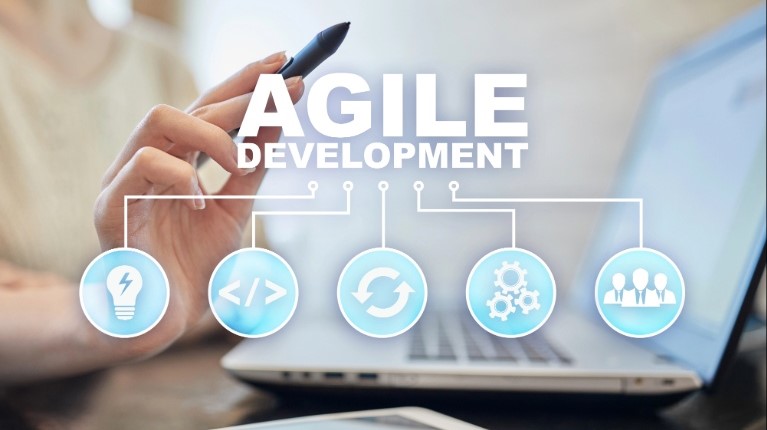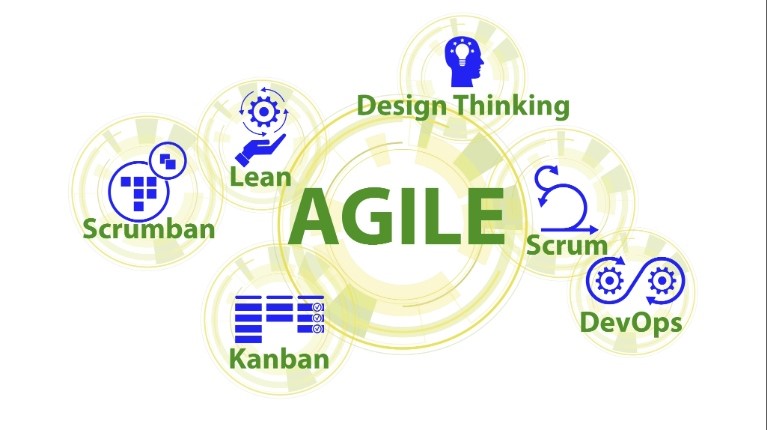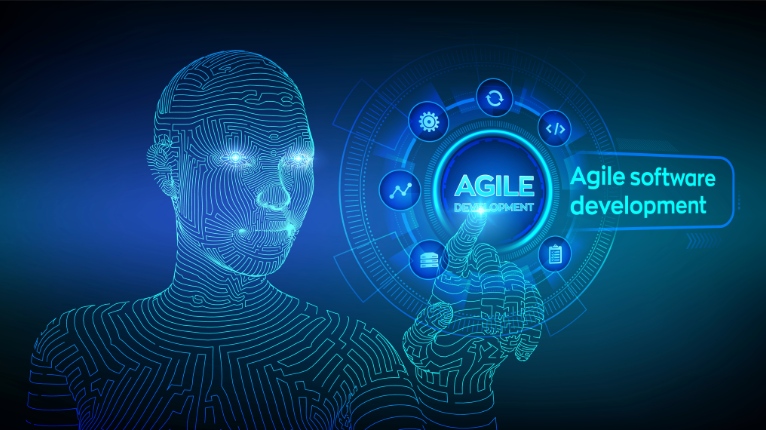Waterfall Vs. Agile Methodology: What’s The Difference?

The way organizations deliver projects has never been more important. Businesses face changing customer expectations, tighter timelines, and the latest technology.
In this environment, the chosen methodology for managing projects often determines success or failure. Some teams prefer a structured roadmap where every step is carefully documented and executed in sequence. Others do well in an environment where flexibility, collaboration, and rapid iteration drive results.
That divide is what makes the conversation around Waterfall vs. Agile methodology so important. Both approaches have influenced modern project management, yet they could not be more different in practice.
Waterfall works best when projects need stability and predictability. Agile works best when projects need flexibility and ongoing delivery. Knowing the difference helps organizations choose the right approach to balance speed, quality, and customer satisfaction.
Understanding Waterfall Vs. Agile Methodology
When we compare the Waterfall vs. Agile methodology, we are actually comparing two distinct philosophies. Each one reflects a distinct approach to how teams plan, execute, and deliver work.
What Is Waterfall?
Waterfall is one of the oldest formal project management approaches in technology. Introduced by Dr. Winston W. Royce in the 1970s, it established a linear model in which projects progress in a step-by-step manner. Each phase is dependent on the one before it.
Teams gather requirements, design solutions, implement code, test the results, and finally move into maintenance. The model offers transparency because all requirements are defined upfront, leaving little room for midstream changes.
The Waterfall approach is easy to visualize through Gantt charts, which outline every milestone on a fixed timeline. This visualization helps project managers control costs, manage risk, and track progress against the plan. For industries that value documentation and predictable outcomes, Waterfall still provides a sense of security.
What Is Agile?
Agile emerged as a response to the limitations of the Waterfall. In 2001, a group of 17 software practitioners published the Agile Manifesto, outlining values such as collaboration, adaptability, and incremental delivery.
Agile reframes the way teams think about projects by breaking large goals into smaller, manageable units called sprints. Each sprint delivers a functional increment of the product, which stakeholders review before the team moves forward.
Agile values flexibility. Teams can adapt to changing requirements because customer feedback happens frequently. Instead of one big release at the end, Agile projects produce usable deliverables throughout the process. The iterative nature reduces the risk of misalignment and helps teams course-correct before small issues turn into large problems.
The Waterfall Approach in Depth
Waterfall works best when the project scope is clear from the start. Every phase depends on completing the previous one. Requirements are collected once, and stakeholders provide approval before the project advances to the next stage. This process provides stability but comes with tradeoffs.
In practice, Waterfall is common in construction, hardware rollouts, or industries with strict regulations. For example, a government contract requiring compliance documentation benefits from Waterfall’s structured design. Because requirements are locked early, project managers can communicate a precise budget and delivery schedule.
However, Waterfall can create problems if assumptions change after planning. Testing occurs late in the cycle, so bugs or gaps discovered near the end can require costly rework. Clients may also feel disconnected since they typically provide input only at the beginning and end of the project. This limited interaction raises the risk of delivering a final product that does not meet expectations.
Despite these challenges, Waterfall’s greatest strength remains predictability. When stakeholders want certainty and minimal deviation, Waterfall provides a structured framework that delivers exactly what was scoped.
The Agile Approach in Depth
Agile flips the Waterfall model on its head by embracing change. Teams don’t plan everything up front. Instead, they define goals at a high level, break them into features, and prioritize those features into a backlog. Cross-functional teams then commit to short sprints where they design, develop, test, and deliver functional increments of the product.
Agile also introduces specific roles and ceremonies to keep projects moving. A product owner manages the backlog and prioritizes features based on their value to customers.
A scrum master facilitates the process, removing blockers and keeping the team aligned. Developers, designers, and testers collaborate daily through standups and sprint planning sessions. At the end of each sprint, the team demonstrates progress to stakeholders, gathers feedback, and reflects on how to improve in the next iteration.
The biggest advantage of Agile lies in flexibility. Teams receive feedback early and often, which minimizes the chance of building something that misses user needs. Agile also delivers value faster because increments are usable immediately, even while development continues.
That said, Agile does require consistent stakeholder involvement. Documentation is lighter, so onboarding new team members can be challenging. Scaling Agile across a large enterprise demands discipline and enterprise Agile planning tools to prevent fragmentation.
Agile Vs. Waterfall: Breaking Down the Differences
Although both methodologies share the same goal: successful delivery, they approach that goal in very different ways.
Planning
Waterfall requires detailed planning up front. Every feature, deadline, and resource allocation is documented before work begins. Agile treats planning as ongoing, with room to adapt as new information emerges.
Scope and Flexibility
In Waterfall, scope changes are costly and disruptive. Agile welcomes changes, as the backlog can be reprioritized based on new customer needs or market conditions.
Delivery
Waterfall delivers one finished product at the end of the process. Agile delivers smaller increments throughout the lifecycle, which provides faster time to value.
Testing
Testing in Waterfall takes place after development is complete. Agile integrates testing into each sprint, catching defects early and influencing future design decisions.
Communication
Waterfall relies on formal reports and documentation to communicate progress. Agile favors direct, informal communication through daily standups and sprint reviews.
When to Use Waterfall
Waterfall excels in projects where requirements are well understood and unlikely to change. Infrastructure projects, compliance-driven initiatives, and manufacturing fit this profile. For example, a project building a secure data center benefits from Waterfall’s structured approach because it needs predictable outcomes and strict sequencing.
Projects with straightforward deliverables, long timelines, and minimal client interaction also align with Waterfall. Stakeholders appreciate the stability of knowing exactly when and how the project will conclude.
When to Use Agile
Agile is the better fit when projects involve complexity, rapid iteration, and constant feedback. Startups use Agile to release minimum viable products quickly and refine them through user feedback. Enterprises adopt Agile to accelerate innovation and stay competitive in fast-moving markets.
Agile supports creative problem-solving, product development, and distributed teams that rely on constant collaboration. It is also the preferred methodology for organizations delivering customer-facing applications where the ability to pivot matters more than upfront precision. The right team management tools give Agile teams visibility into workloads, backlogs, and dependencies.
Waterfall Vs. Agile: Making the Right Choice
Choosing between Agile and Waterfall depends on balancing predictability with flexibility. The real key lies in assessing the project’s goals, timeline, and stakeholder involvement. Teams that value certainty will tend to favor the Waterfall approach. Teams that value speed and adaptability will thrive in an Agile environment.
Finding Your Balance with Metronome
At Radus Software LLC, we know that the choice between Waterfall and Agile is not always clear-cut. We created Metronome, our AI-powered Project Collaboration Suite, to support teams. With us, you can adapt to changing requirements and scale agility across the enterprise.
No matter if your organization relies on Waterfall’s structured predictability or Agile’s iterative flexibility, Metronome can help you focus on delivering outcomes, not managing complexity. Request a demo with us today to give your teams the tools to move in sync and deliver with purpose.



